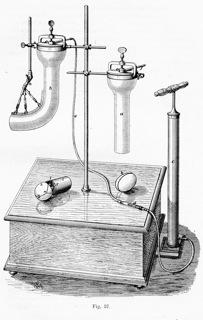Beginning in the mid-eighteenth century, labor in Western medicine was understood as a mechanical procedure consisting of a regular sequence of seven fetal movements. At the beginning of the twentieth century the sequence was well known but the reasons for it were not yet understood. What kind of mechanical and expulsion forces were at work in the birth-giving process?
At the turn of the twentieth century, German gynecologist Hugo Sellheim (1871–1936) embarked upon a research project in order "to unveil the still hidden laws of birth mechanics." His research took place in an age without either sonographic visualization or Caesarean sections as routine obstetrical interventions. Most babies were delivered at home and not in hospital. A deeper knowledge of the mechanical forces was sought to help calculate and anticipate the course of labor/the birth process on the bases of natural laws rather than on professional experiences. Sellheim’s overall goal was the development of a simple birthing formula. He developed "birthing machines" as a research tool with which to develop such a formula. These machines were designed and constructed in all possible forms, materials, and scales, from adult-scale glass tubes to smaller versions made of wire that fit inside the pocket of medical students. In contrast to the "phantoma"—the traditional anatomical obstetrical teaching devices—"birthing machines" as a tool break with these traditional devices, instead modeling the birth process from a strictly abstract and mechanical perspective.
In her project Martina Schluender follows different kinds of birthing machines (in its broadest sense—both mechanical and social) to explore reproductive practices and techniques in German institutions and academic disciplines between 1900 and 1930, to understand how gender, living beings, and also different ways of knowing are reproduced and how they merge with each other. Ambulant science—a concept from Deleuze and Guattari’s book Mille Plateaux—is mobilized as a tool of producing knowledge in an itinerant way and will help me to draw connections between different reproductive practices. The practices examined include: reproduction as a genealogical practice in academic disciplines; reproduction as a teaching technology to pass over knowledge and skills; reproduction as a method to produce reliable data in a specific type of science (one which is not ambulant); and the understanding of reproduction as reproductivity: the female body’s capacity to double.

